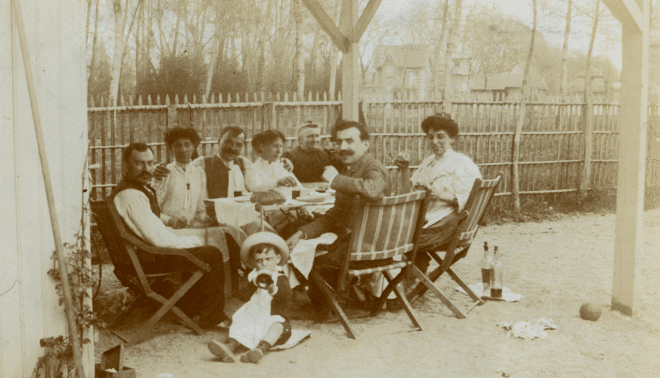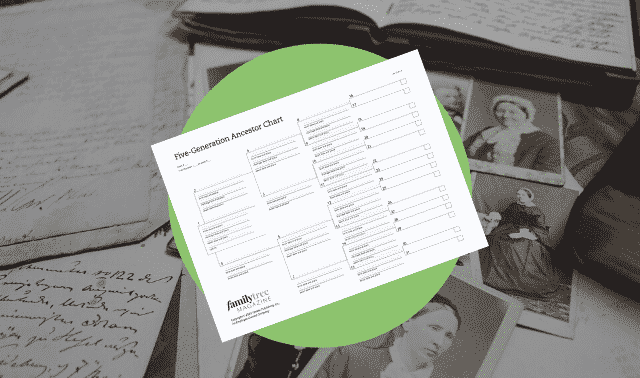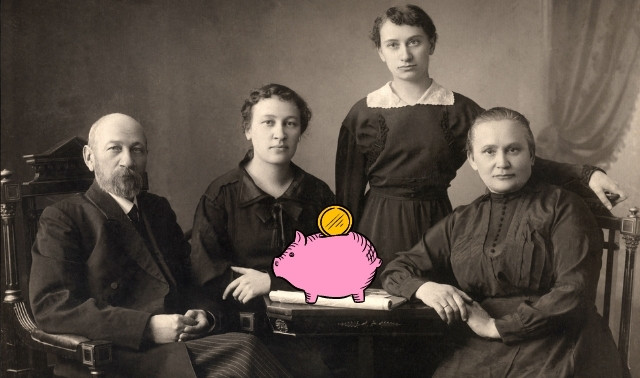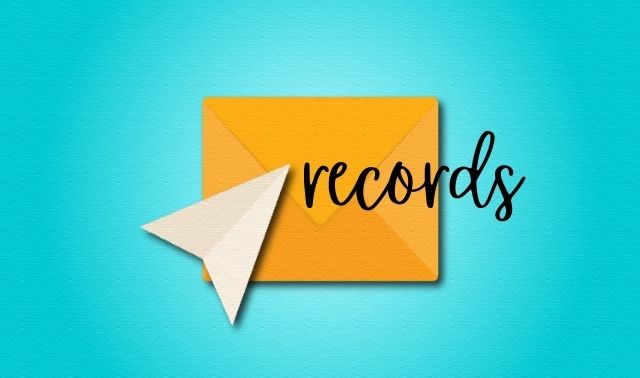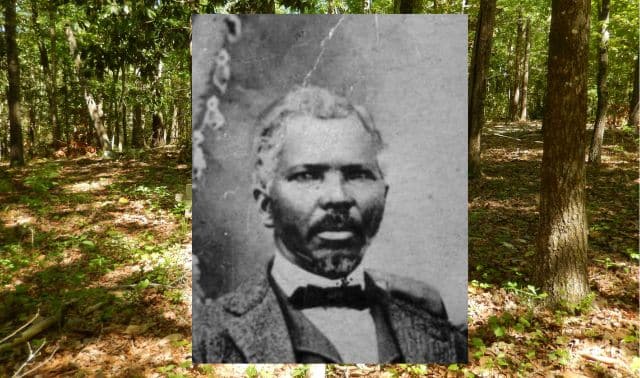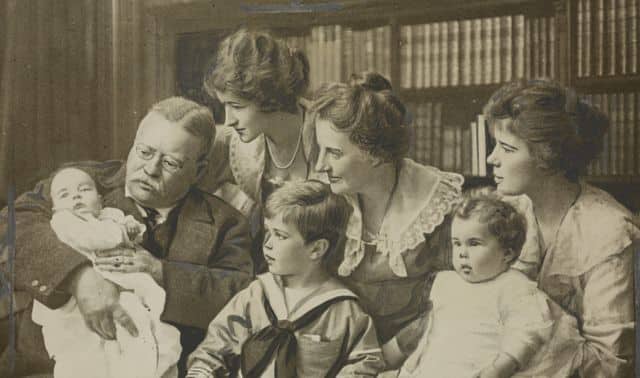Sign up for the Family Tree Newsletter! Plus, you’ll receive our 10 Essential Genealogy Research Forms PDF as a special thank you.
Get Your Free Genealogy Forms
"*" indicates required fields
What does your last name mean? What’s a second cousin twice removed? And what’s the deal with family crests?
These are just a few of the common questions you might encounter when you start exploring your family history. In this article, we’ll provide answers to these and many other genealogy questions we’ve received from readers throughout the years. We’ll also reveal the truth behind some common myths, plus give tips for organizing and sharing your findings.
Share these answers with the newbie genealogist in your life—or brush up on them yourself!
In This Article
1. How do I start researching my genealogy?
2. Where does my last name come from? What does it mean?
3. What is the best way to build a family tree?
4. What are second cousins? What does “removed” mean?
5. How do I find my family’s crest and coat of arms?
6. How do I find out if a family story is true?
7. Can I find my ancestors for free?
8. How should I organize my genealogy research?
9. I’m stuck and I’ve tried everything. What do I do now?
10. How do I find records that aren’t online or indexed?
11. How do you research ancestors who lived prior to 1800?
12. What is the best way to share my research?
13. How do I preserve my research for future generations?
1. How do I start researching my genealogy?
So much family history information is available today that it can be difficult to know where to begin. Many people skip right to searching names on large databases like Ancestry.com. However, this approach doesn’t always yield the most-accurate information.
To build a strong foundation for your research, set a specific goal to keep you focused and productive. Then ask your family members what they know, and fill out a simple family tree that starts with yourself and works backward in time.
From there, you’ll identify gaps in your tree that you can create a plan to explore. Our beginner guide walks you through these steps.
2. Where does my last name come from? What does it mean?
Determining name origins is not an exact science. Depending on your ancestors’ cultural naming conventions, your surname might come from a place (“Hill,” “Lachlan”), occupation (“Smith,” “Cooper”) or physical characteristic (“Strong”).
Other cultures made extensive use of patronymics, in which surnames changed generation to generation based on the name of a child’s father. For example, Ivan Janson is the son of Jans, and Ivan’s daughter Agnes would be Agnes Ivandotter.
Both Ancestry.com and FamilySearch have surname-origin finders. There are also a variety of books and websites you can search.
3. What is the best way to build a family tree?
If you’re creating a family tree for research purposes, your main options are to use either genealogy desktop software or websites like Ancestry.com. Each option has its own advantages and disadvantages, so the best for your research depends on how much customization and privacy you want.
You might even use both software and online trees: for example, building a “master” family tree on software that then syncs with major websites as necessary.
If you’re creating a decorative family tree, you can use a variety of online free templates. Many of the major genealogy websites allow you to print attractive family trees directly from your account. There are also specific companies that specialize in creating and printing family trees, like Family ChartMasters.
4. What are second cousins? What does “removed” mean?
The terms “first,” “second,” “third” and so on refer to the closest ancestor you and a cousin share. You and a first cousin share a set of grandparents, and you and a second cousin share a set of great-grandparents in common. (And so on.)
When you and cousins are “removed,” that means the two of you have a generational difference between you and your shared ancestors. Your first cousin’s child, for example, is your first cousin once removed. You and that child share your grandparents as common ancestors, but you are one generation removed; your grandparents are the child’s great-grandparents.
Still confused? See our guide to cousinhood terms and our handy chart.
5. How do I find my family’s crest and coat of arms?
First, a point of clarification: a “coat of arms” is a collection of symbols associated with a prominent individual. A “crest” is just one element of a coat of arms, usually adorned at the top of a helmet.
Unfortunately, family crests and coats of arms are myths for most people. Coats of arms were granted to individuals—not families—and aren’t tied to surnames. Most people are not entitled to use them, and the tchotchkes you can buy with “your” family crest are not based in fact.
Coats of arms can, though, be inherited. To use them rightfully, you would need to find the coat of arms in the issuing country’s heraldic register and prove a line of unbroken male-line descent. Keep in mind that the laws of heraldry differ with each country.
6. How do I find out if a family story is true?
Most families have at least one questionable family legend. Common themes are presence at military victories or major historical events, surname changes or famous ancestors (such as George Washington or a “Cherokee princess“).
To find out if your family stories are true, familiarize yourself with common tall tales (such as “my ancestor’s name was changed at Ellis Island”).
Next, determine what you know and identify what evidence could prove or disprove the story. Search for the evidence, then evaluate what you find. You can learn more in this article from archivist Richard Hite, and from his book Sustainable Genealogy: Separating Fact from Fiction in Family Legends (Genealogical Publishing Company).
7. Can I find my ancestors for free?
When you start genealogy research, it can seem like subscription websites are the only way to find what you need. While it’s true that you will most likely need to pay for access to records at some point, there are tons of records available for free online.
Start by browsing our list of helpful, free websites. Megawebsite FamilySearch is a standout, 100% free website that has billions of records and an excellent tree-building tool. Also keep in mind that many subscription websites offer certain record collections for free, including Ancestry.com and MyHeritage (look for the green “Free” tag).
8. How should I organize my genealogy research?
Organization is a perpetual struggle for many family historians. Genealogy generates a lot of material: paper documents, photos, notes and more—not to mention all the digital assets that also need organizing.
Each of these areas requires its own strategy. However there are a few general tips that will help you control the chaos:
- Establish an organization routine that you can do consistently
- Choose a filing system for printed materials that fits your research
- Create a standardized file-naming system for your digital files and stick to it
What about all those thoughts, theories and notes you jot down during a research session? Enter the research log. Research logs might seem tedious, but they can do wonders for keeping your research organized. And they allow you to pick up right where you left off without re-doing research.
9. I’m stuck and I’ve tried everything. What do I do now?
Genealogists often call a seemingly dead-end situation a “brick wall.” Brick walls can be extremely frustrating. The best course of action will depend on your specific research, but there are a few general tricks you can try:
- Write a research report. Taking on a methodical writing project might help you clarify the problem, identify holes in your research and uncover new strategies to try.
- Create a timeline. Timelines can help you visualize your research in a new way. They can expose logical inaccuracies that may be tripping you up, or reveal a specific date range that you should research more thoroughly.
- Use a different research method. If you’ve been primarily focusing on direct-line research, try changing up your strategy. Explore collateral relatives (i.e., family members from whom you’re not directly descended) or your ancestor’s “FAN club” (friends, associates and neighbors).
Still no luck? You may have hit a true brick wall. If that’s the case, there’s nothing wrong with putting the issue aside and focusing on another line. You might find that taking a break and coming back with fresh eyes is just what you needed.
10. How do I find records that aren’t online or indexed?
Though many records are online, there are still several that have not yet been digitized (and still others that aren’t keyword-searchable). For example, FamilySearch hosts a huge collection of records that have been scanned but not yet indexed on the Historical Images Portal.
For records that aren’t, you’ll have to go the old-fashioned route: Identify institutions that may have archival records you’ll need (churches, courthouses, historical societies, libraries, etc.). Then, either make a records request or plan a research trip!
11. How do you research ancestors who lived prior to 1800?
Generally, the further back you go in your research, the more difficult it becomes. Records may not have been created, or didn’t have a genealogically useful level of detail. This goes double for those researching African American ancestors, for whom tracing ancestors before the Civil War can be extremely difficult (but not impossible).
For older time periods, familiarize yourself with the record sets that are available (church records, estate records, land records, etc.).
Prior to 1840, for example, US federal censuses only named the head of the household and had mere tick marks to indicate other members.
12. What is the best way to share my research?
Get loved ones interested in your research by focusing on stories that living family members can relate to, such as those involving resilience or beloved traditions or heirlooms. Use those stories to create eye-catching projects such as family history binders, photo books and websites.
Whatever form your project takes, a good strategy for sharing your research is transforming your findings from a list of dry facts into a compelling narrative.
13. How do I preserve my research for future generations?
The most important thing to making sure your research outlives you is to organize it. Anyone who inherits your research is much more likely to get rid of it if it’s an incomprehensible mess. This also applies if you are planning to donate your research to a library or archive. You can safeguard the future of your research by making sure it is clear, well-organized and easy to understand.
You also might consider creating a genealogy will or codicil: a document that describes what is in your family history collection (digital assets included), where they are located, and what your wishes are for them. We all make plans for our most valuable possessions after we are gone—your research deserves the same treatment!
A version of this article appeared in the January/February 2024 issue of Family Tree Magazine. Last updated: November 2024.
FamilyTreeMagazine.com is a participant in an affiliate program through Genealogical Publishing Co. It provides a means for this site to earn advertising fees, by advertising and linking to affiliated websites.

